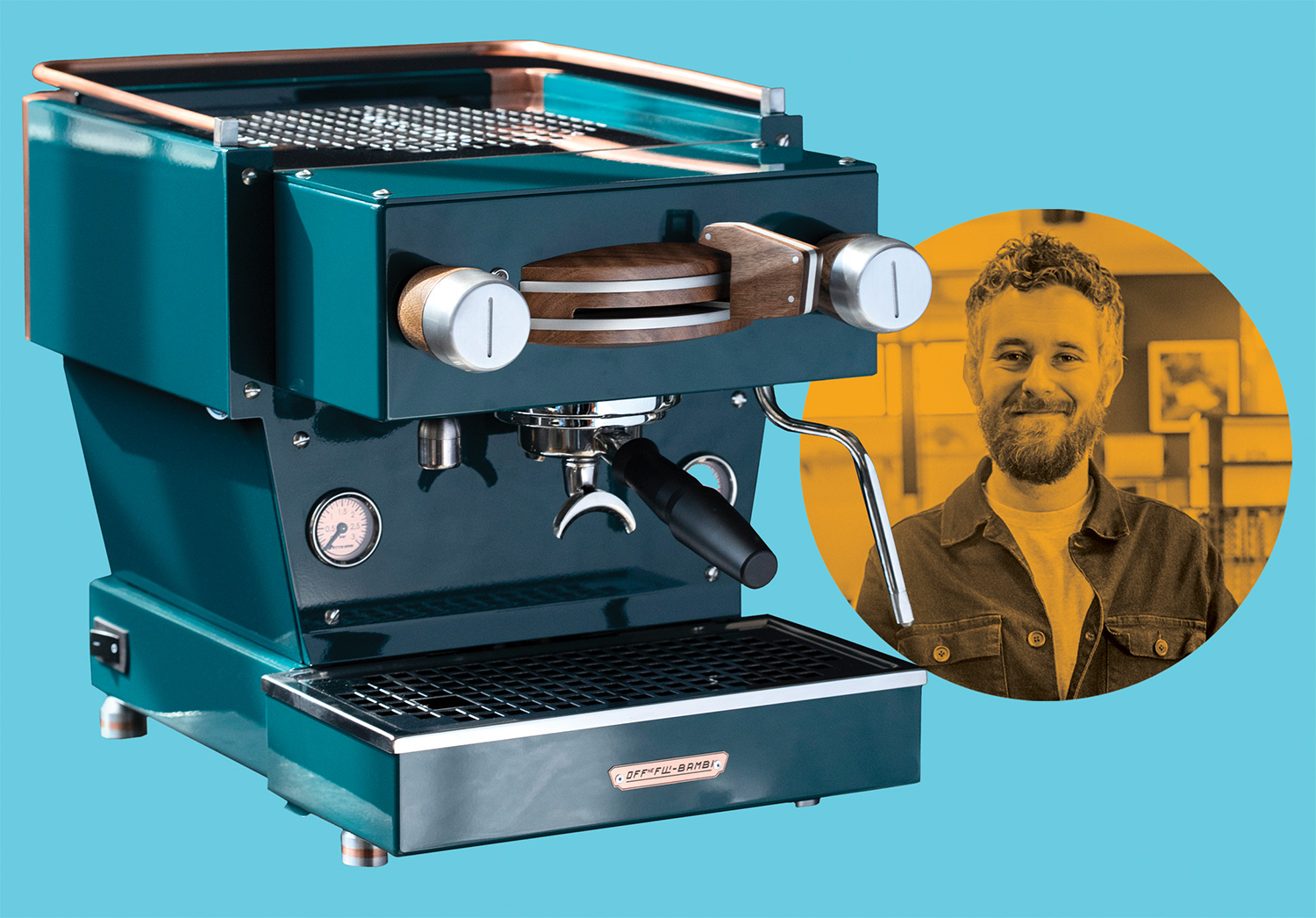
Inside the Mind of La Marzocco’s Head Designer, Stefano Della Pietra
La Marzocco’s head designer, Stefano Della Pietra, on Piero Bambi, his design philosophy, and the legacy of the espresso company.
Editor’s Note: This story is published in The Florence Issue of Life & Thyme Post, our exclusive newspaper for Life & Thyme members. Get your copy.
La Marzocco is synonymous with great espresso. Since its founding by Giuseppe and Bruno Bambi in 1927, the company’s espresso machines have been designed to perform to the highest standards, as well as to last a lifetime.
Beyond mere performance, however, a La Marzocco machine is designed with beauty in mind. The brand’s aesthetic reflects the city it calls home: Florence. The birthplace of the Renaissance, being in Florence means being surrounded by the work of the masters.
As integral as art is to Florence, so is espresso. Standing at a café bar is ubiquitous with the culture of the city. Both utilitarian and social, in Florence, espresso is about more than the caffeine it offers; it’s a ritual.
It only makes sense, then, that Florence is the home of La Marzocco’s Accademia del Caffè Espresso, which is housed in what used to be the company’s old factory. Part museum, part research lab, part workshop, Accademia is La Marzocco’s cultural hub. It represents a confluence of their work not only in pushing espresso forward through the construction and design of their machines, but through their environmental and educational work.
In the basement of Accademia is Officine Fratelli Bambi, La Marzocco’s bespoke design studio. Led by head designer Stefano Della Pietra, Officine is reviving the traditional hand-crafting techniques La Marzocco was founded on.
For Della Pietra, this work comes with a personal connection. Piero Bambi was his mentor before his passing. Bambi taught Della Pietra about design and proportions, and imbued him with the confidence and experience necessary to lead the next generation of La Marzocco’s artisans.
We sat down with Della Pietra to talk about Bambi, La Marzocco’ design philosophy, living alongside art in Florence, and more.
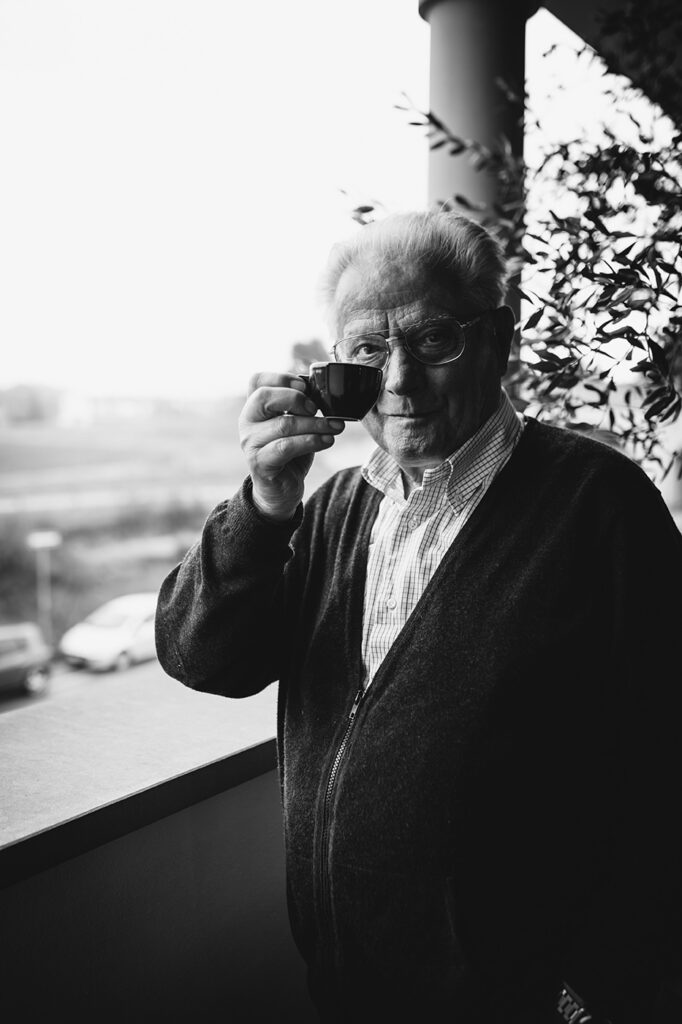
On Piero Bambi:
I worked with him every day for five years. He was 80 years old and still coming every day; he was so passionate about his work. And he was still able to work at 80 years old. I feel really lucky for that.
I think finding a person who wants to teach at that age is not easy. He was also super direct, telling you things as they are. At the beginning, it wasn’t easy, but once you start to understand how his mind worked, you could go much faster. What he always wanted was to have the perfect product.
At the beginning, I started drawing shapes and things like that. He had an eye for proportions, so once I gave him a shape, he would move the lines little by little. I would give him a base where he would refine the details. And in the end, the details are the things that completely change the machine. I really learned a lot from him.
On La Marzocco’s design philosophy:
It’s trying to make something that can work in the best way. For us, this evolved into trying to offer better interfaces—so improving the ergonomics as much as possible from the barista side. And for the shape, trying to create something that is timeless. The shape should be a classic.
A La Marzocco should always feel like a heavy-duty machine. You have to feel it—when you press a button, it can’t be too soft. The machine needs to have strength in every feedback that is given to the barista. When you touch it, when you press something, when you move a lever—everything has to give that mechanical feeling. But it also has to be able to be maintained and to keep working without stopping.
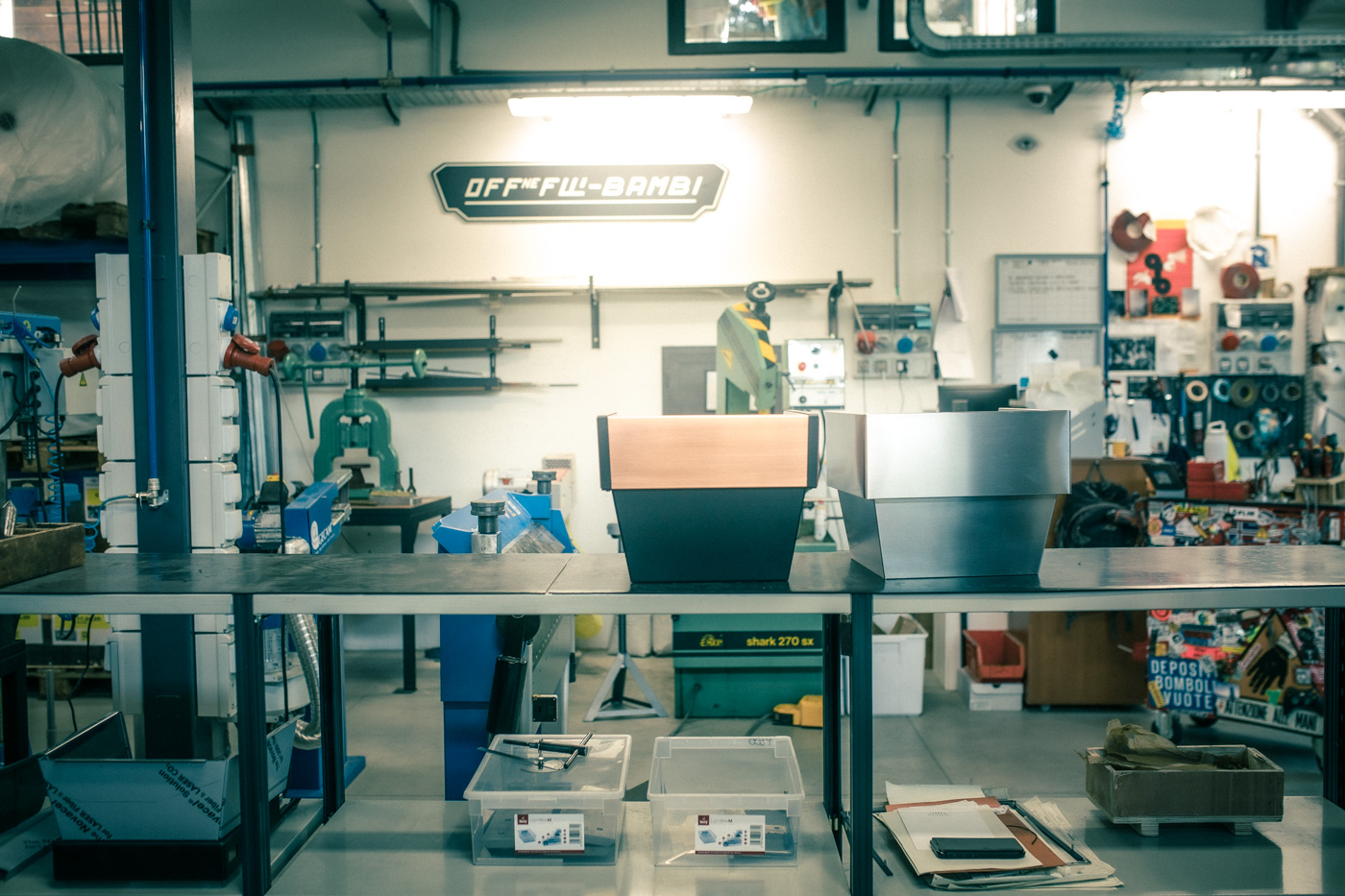
On finding La Marzocco:
I went to school for three years in Prato, and then in Florence, focusing on mechanical engineering. I started studying in Prato for the motorcycle specialization.
The funny thing is that the school where I went is the same that Piero went to when he was young. When he was there it was a high school, and then it changed into a university, but it was the same building. I discovered that many years after I met Piero.
After university, I tried to find my way working on motorcycles, but I couldn’t. So I decided to change, and I found La Marzocco where I felt I could have the possibility to create something, draw something, see something, realize something.


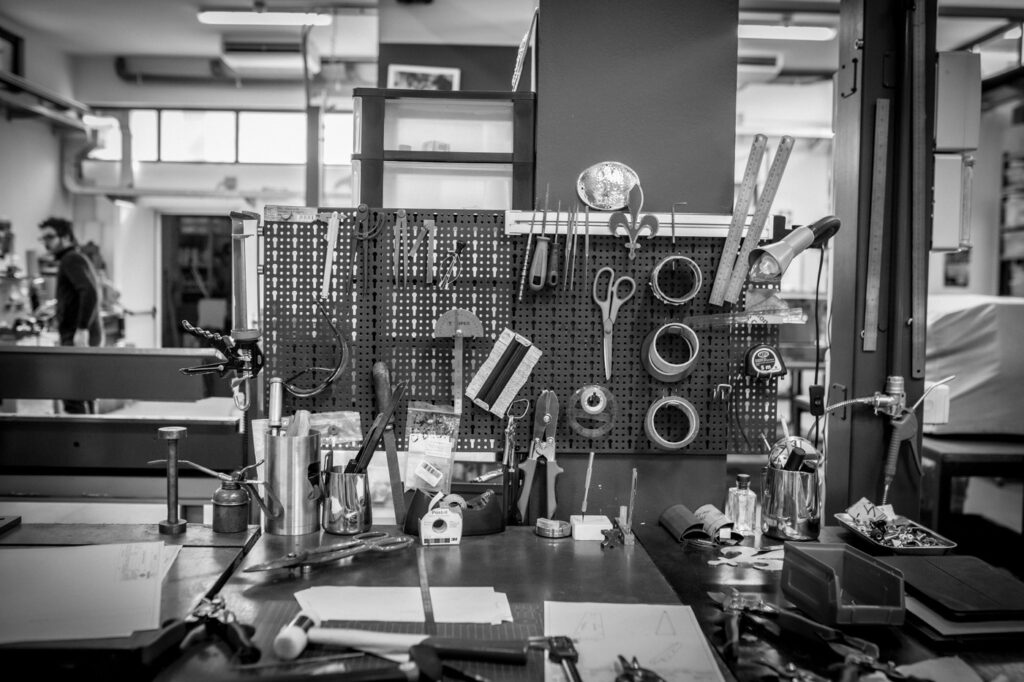
On his childhood:
My mom tells me I was a little hard. I didn’t want to be helped with things; I wanted to try them myself. Even when she knew how to do something, I wouldn’t listen to her. Now I have a baby and it’s acting exactly like I did.
I think I have always been trying to make new things since I was really young. My mom tells me I used to look at everything. I still have this type of approach, even without wanting to. Just looking. I think you can take inspiration from anything because everything around us has been thought out by someone.

On Officine Fratelli Bambi:
We work in the traditional way we were doing 40 years ago. We decided to renounce new technology in creating the shapes for the machines because this allows us to keep the legacy with our brand and our tradition in shapes. It’s a super small production.
But there is another part that is related to this workshop—this is also the design hub for La Marzocco. We create every new mock-up or ergonomic prototype that will go into production for La Marzocco.
The idea behind the design of a La Marzocco is to give baristas a classic shape so they don’t want to change it in two or three years. Our mechanical goal is to create products that can last, more or less, forever. So even the design has to follow this line, creating a shape for a new production with traditional tools keeps us true to our roots.
Every machine that comes from this workshop—the body, the external components are made by hand with traditional techniques, whether through cutting by hand, bending, rolling by hand, or even panel beating.
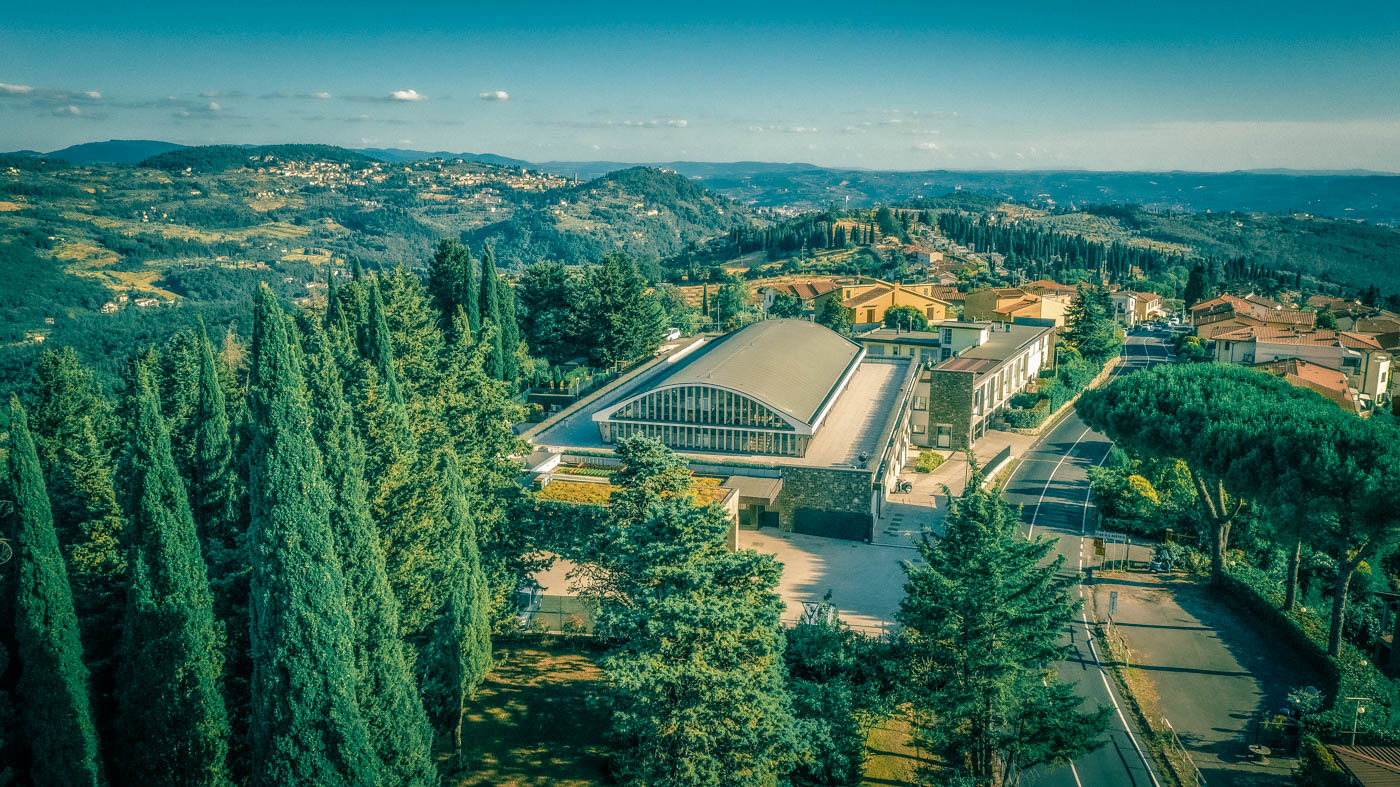
On being surrounded by art and architecture in Florence:
I think when you live in a place like this, even if you don’t want to, you see proportion every day. Because you can see what has been realized before that works. From the architectural point of view, you can see proportion in anything when it’s well-designed. We are lucky that we have all this art and these buildings around us that train our eyes from birth.






Our comments section is for members only.
Join today to gain exclusive access.